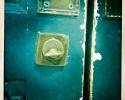The standard treatment for obsessive-compulsive disorder (OCD), usually medication and psychotherapy, is effective for some OCD sufferers but not all.
Another treatment option, though rarely used, is a type of psychosurgery called bilateral anterior capsulotomy. It offers a chance for those with severe, stubborn OCD symptoms to find relief.
Although today’s psychosurgery is nothing like the lobotomies done 70 years ago, it is still somewhat controversial. Some doctors and scientists endorse the surgery as being effective and safe, while others believe the risks outweigh possible benefits.
Appropriate Under Thoughtful Regulation
Researchers who recently completed a study at the University Laval in Quebec write, “We are aware of the many ethical and sociopolitical considerations related to psychosurgery, but we think that such surgery is appropriate under thoughtful regulation, particularly when the disorder is chronic, intractable to non-invasive treatment modalities and when surgery is the last therapeutic option.”
The Quebec study involved 19 people with severe OCD who underwent bilateral anterior capsulotomy surgery. Almost half of the subjects, 47.3 percent, reported significant symptom reduction. Three of the 19 participants recovered from their OCD, and three more had minimal symptoms and were considered to be in remission. None of the 19 died, though two had permanent surgical complications.
Bilateral Anterior Capsulotomy
Neurosurgery for mental disorders is not used to change a person’s behavior and is not generally thought to provide a cure. The procedures cannot be reversed.
A bilateral anterior capsulotomy is performed on areas of the brain’s frontal lobes involved with emotional reaction. The goal is to disable connections between nerves in extremely small sections of the brain that seem to facilitate obsessive thought.
The Procedure
- Two holes, called burr holes, are made in the skull, one on each side of the midline at the top of the head. (Patients are under general anesthesia.)
- Using imaging technology as a guide, a probe is passed through each hole to the brain’s internal capsule. The internal capsule is the main route connecting the cerebral cortex with the brain stem and spinal cord.
- Electrical currents pass through the probes, generating heat that destroys brain tissue at the probes’ end.
- This surgery takes only about an hour and a half; most of that time is used to position the probes.
- There is no standardized target area for the probes. The area that is heat-zapped depends on which treatment center does the surgery.
There can be adverse effects with any surgery. Those specifically associated with bilateral anterior capsulotomy are headaches that may last for days and, in the long-term, apathy and weight gain. Personality changes are rare, and there have been no reports of loss in thinking ability.
Sources: Science Daily and Mind.org




